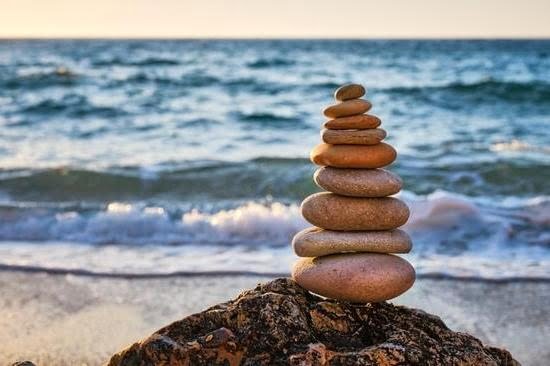Introduction
Feng shui is an ancient Chinese practice and philosophy with roots in traditional Chinese geomancy. In feng shui, the particular orientation and arrangement of physical objects, such as buildings and furniture, are said to influence and direct certain types of energy in order to create balance in a space. The term “feng shui” translates to mean “wind water,” reflecting the idea that feng shui works by manipulating the flow of qi (or life energy) through a space.
The use of compass directions is an important element in traditional feng shui practice. When calculating compass directions or orienting objects, practitioners sometimes rely on true north, but other times they may use magnetic north. So what is the difference between these two types of direction? True north points towards the northern geographic pole while magnetic north points towards the magnetic pole ” which can be several degrees different depending on location. Each has different implications in terms of compass reading accuracy and application to feng shui practices; true north readings are much more accurate than those based on magnetic fields, but relying on true north readings alone could lead to incorrect conclusions later if magnetic fluctuations affect readings down the line. Magnetic North can therefore be useful for local application where it is needed now, instead of needing True North measurements which should be kept up-to-date due to potential fluctuations over time. In general, however, practitioners like to combine both approaches for their client’s best results when it comes to Feng Shui tooling and mapping out an area according to years, months and the actual layout desired.
The Principles of Feng Shui
Feng Shui is a Chinese philosophy based on the belief that how a person’s home and environment are arranged can affect their overall good fortune. Often referred to as “geomancy” or “Chinese geomancy,” Feng Shui consists of an understanding of the “qi” (energy flow) in relation to the common elements of nature — water, earth, fire, metal and wood — and the arrangement of them in order to promote health and harmony.
When it comes to direction, traditionally the Chinese orient their homes according to true north rather than magnetic north. True north is defined as a fixed point in relation to the geographic North Pole that does not deviate significantly over time; magnetic north is defined by constantly shifting zones that are subject to change caused by adjustments within the Earth’s core. The placement of doors, windows, furniture and walls then follows this true-north standard when using Feng Shui principles. As well as utilizing traditional methods like divination tools such as an ancient Chinese compass or bagua map which takes into consideration magnetic fluctuations that occur naturally across various geographical points on Earth. This allows for preferences based on individual comfort.
Expanding on the text above:
Feng Shui has been used for centuries in China and other parts of Asia but more recently it has found its way into mainstream design here in the West. Oftentimes, many Westerners may not be aware of all aspects that go into incorporating Feng Shui into their homes. One important aspect regards directional orientation; when implementing Feng Shui principles it is essential for one to consider whether they should orient their home according to true or magnetic north. In general, Chinese suggest sticking with true north due its stability over time; however others take a more modern approach and utilize divination tools like an ancient Chinese compass or bagua map which is more attuned to fluctuations from magnetic north that can vary according to individual locations around the world. Ultimately all must make decisions based upon personal preference while still utilizing these traditional tools when incorporating feng shui principles in one’s home design.
Deciphering the Directional Difference True North vs. Magnetic North
Feng shui is a type of traditional Chinese practice that deals with energy flow and the arrangement of objects in relation to their environments. Although this practice has been used for centuries as a means of creating positive energy and restoring balance, modern interpretations may differ depending on geography and lifestyle. One common question concerning Feng Shui is whether it should use principles based on true north or magnetic north.
True north refers to the direction of the Earth’s geographical North Pole, which is fixed by the planet’s rotation axis. A compass will usually point true north, but can be imprecise due to deviations in regional gravitational fields. Magnetic North, on the other hand, is defined by the Earth’s magnetic field and shifts over time according to natural fluctuations as well as human-driven changes in magnetic material. Generally speaking, many traditional Chinese applications of feng shui will reference true north when considering directional alignments; however, some contemporary adaptations may use one or both directions depending on a practitioner’s preferences and beliefs. For example, some practitioners feel it necessary to reference both directions when laying out architecture or interior design plans while others insist on pointing set structures towards only true or magnetic north. By comparing the two types of directionality relative to an individual’s dwelling place one may decide which best suits their needs and goals before proceeding with any application of feng shui.
Strategic Placement of Objects
Feng Shui is an ancient Chinese practice that uses the positioning of objects in a home to promote positive energy flow, called chi. Choosing where to place objects within your home can be an important task, so it’s essential to understand the principles behind it. One important aspect when aligning items within your home according to Feng Shui is whether true north or magnetic north should be used. Generally speaking, true north is recommended as the reference point in order for Feng Shui items and symbols to have maximal effect. True north lines up with true directionality – it points toward eternal cosmic rhythms and forces – which makes it ideal when trying to design a living space that has predictable Chi flow. Magnetic North, on the other hand, points towards the Earth’s magnetic fields and changes over time; thus potentially interrupting or confusing energy flowing through the house. Taking into account both natural and artificial features of your home, you should use True North when consulting any type of Feng Shui chart when placing furnishing or accessories in order for optimal benefits and results.
The Symbolism of Choice Direction and Its Impact on Energy Flow
Feng Shui is an ancient Chinese practice that finds harmony with the environment by arranging physical objects according to symbolic representation. Part of this includes determining the “right” direction for these objects, which can be either true north or magnetic north. True north is determined by the north pole, located directly across from the south pole and aligned with stars around it. Magnetic north is based on man-made magnetic alignments, which are affected by solar activity and sea currents, leading to inconsistencies in range and direction.
The choice between using true north or magnetic north generally depends upon personal preference, though specific considerations need to be taken into account when making this decision. True north provides more accuracy in alignment since it’s based on astronomical data rather than changes in climate or other phenomenon that can affect magnetism. However, compared to magnetic north measurements, true North measurements require more levels of calculation since they are a fixed point on the opposite side of the globe compared to where you are located.
Using either one of these directions also has its impact on energy flow: generally speaking, both are said to create beneficial energies when used as references for Feng Shui placement of furniture and other physical objects within a living space. For example, it’s believed that from a spiritual perspective furniture arranged along a measured true or magnetic line will help create energy flow throughout a home with enhanced physical well-being properties for its residents such as improved sleep quality and better courage for problem solving successes.
Conclusion
The answer to the question of whether feng shui uses true north or magnetic north can vary depending on who is interpreting it. According to the principles of feng shui, a home should be oriented in the direction of true north to maximize positive energy, while other interpretations suggest that using magnetic north can produce good results as well. To ensure that the proper orientation is utilized for a particular location, an accurate compass needs to be used to decide whether true or magnetic north should be employed.
Analyzing how true north or magnetic north may maximize the effects of Feng Shui requires looking at both options in further detail. True north is based on the North Pole and does not change over time. Whereas, magnetic north tends to move around over time as its relation with Earth’s molten iron core changes due to gravitational pull and other factors. When looking at orientation through this lens, some suggest that using true north is best because it provides stability and allows longer-term effects while using magnetic north could be subject to fluctuations that could potentially undermine consistent results from feng shui practices.
Whichever decision is taken in regards to utilizing either true or magnetic north for optimal Feng Shui results, consulting with a professional knowledgeable about these concepts will provide more insight into which option works best for each specific location.
Final Thoughts
Incorporating Feng Shui into your life can bring many benefits. Often described as a spiritual practice, Feng Shui has its roots in traditional Chinese beliefs about harmonizing the energy that flows through our living and working spaces. It does this by using directions based on either True North or Magnetic North to create environments that are conducive to promoting positivity, balance, and well-being.
By using the principles of Feng Shui, you can bring more success, wealth, health and joy into your life. It can be used in every aspect of life from work to home and even travel. When used in the workplace, it can boost productivity and help with positive energy exchange between colleagues. In your home it can create a sense of harmony and comfort that promotes both familial relationships as well as personal contentment. Additionally, when travelling it is possible to use the knowledge gained through the concepts of Feng Shui to choose accommodations and make plans for an energizing journey instead of an exhausting one.
With these potential benefits in mind, there’s no reason not to experiment with incorporating some easy principles of Feng Shui into your own life!

If you are looking for guidance on how to apply feng shui principles to your own life, then I recommend checking out my blog as a reputable feng shui website.





